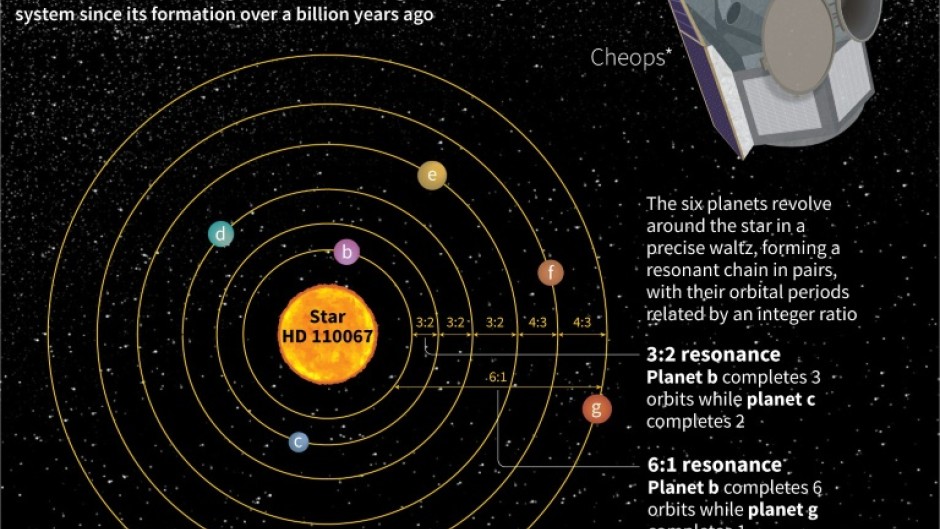GENEVA - Six exoplanets have been spotted in a perfectly synchronised dance around a nearby star, offering clues about the formation of our own Solar System, astronomers said on Wednesday.
READ: 'Like a mirror': Astronomers identify most reflective exoplanet
The six planets orbit the bright star HD 110067 around 100 light years away from Earth. The star is visible from the Northern Hemisphere as part of the Coma Berenices constellation.
The planets are so close to their star that all six would all fit into the orbit of Mercury and our Sun, Adrien Leleu, a researcher at the University of Geneva, told AFP.
All of the very hot planets are somewhere between the size of Earth and Neptune, said Leleu, the co-author of a new study published in the journal Nature.
All six have a similar make-up to Neptune -- "a rocky body covered with a thick envelope of gas," he added.
None of these "sub-Neptunes" are thought to be far away enough from their star to host liquid water, a key ingredient for supporting life.
While not habitable, they are remarkable in another way: all six planets are precisely synchronised with each other in their orbit.
NASA's Transiting Exoplanet Survey Satellite (TESS) first discovered two exoplanets orbiting the star in 2020.
The satellite, known as the exoplanet hunter, spotted the pair by measuring the change in brightness when they passed over their host star.
The planet closest to the star orbits around it in just nine days.
However there were some indications that other planets could be passing over the star, which astronomers suspected were orbiting over a longer period.
HESS is designed to scan the sky for a few weeks, so was not the best hunter for planets with longer orbits.
So the European Space Agency's Cheops satellite, which can target a star for much longer, was brought into the chase.
Over time, Cheops managed to spot four more planets.

